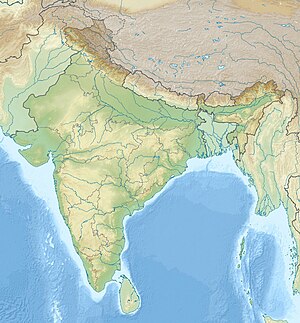
Summary
Tushaspa (Brahmi: Tuṣāspha) was a "Yavanaraja" (Greek King or Governor) for Emperor Ashoka, in the area of Girnar, near Junagadh, in Gujarat, India.[1] He is only known from the Junagadh rock inscription of Rudradaman, in which the Western Satrap king Rudradaman, writing circa 150 CE, mentions his role in the construction of a local dam, in which he added a canal during the reign of Ashoka.[1] The part of the inscription mentioning him reads:

"(L.8) (The dam was) ordered to be made by the Vaishya Pushyagupta, the provincial governor of the Maurya king Chandragupta; adorned with conduits for Ashoka the Maurya by the Yavana king Tushaspa while governing; and by the conduit ordered to be made by him, constructed in a manner worthy of a king (and) seen in that breach, the extensive dam ..."
According to some authors, the name Tushaspa seems to be Persian rather than Greek.[1] Other authors however, consider that he was Greco-Bactrian, given his qualification as a "Yavana", the usual name for Greeks in the east.[4]
Ashoka is known to have mentioned the presence of "Yavanas" in his kingdom in several of his Edicts of Ashoka:
"Here in the king's domain among the Greeks, the Kambojas, the Nabhakas, the Nabhapamkits, the Bhojas, the Pitinikas, the Andhras and the Palidas, everywhere people are following Beloved-Servant-of-the-Gods's instructions in Dhamma".
— Rock Edict Nb13 (Translated by S. Dhammika)
References edit
- ^ a b c A History of India, Hermann Kulke, Dietmar Rothermund, Routledge, 2016 p.154
- ^ Epigraphia Indica, Vol. VIII. Calcutta: Office of the Superintendent of Government Printing, 1905-6, 45-49
- ^ "Junagadh Rock Inscription of Rudradaman", Project South Asia.Archived 23 February 2009 at the Wayback Machine
- ^ Ashoka: The Search for India's Lost Emperor, Charles Allen, Hachette UK, 2012 p.129



